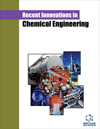
Full text loading...
We use cookies to track usage and preferences.I Understand
Produced water is reported to have the largest volume of waste stream associated with hydrocarbon recovery. It was estimated to increase from 250 million B/D in 2007 to more than 300 million B/D between 2010 and 2012. Market research conducted by Adroit put the globally produced water treatment market at a value of USD 5.10 billion in 2022. This value is anticipated to be USD 9.80 billion in 2032 at a compound annual growth rate (CAGR) of 5.80% over the prediction period. Oil and gas companies have been mandated to comply with the newly enacted environmental regulations that require extensive treatment of this water before discharge or reuse. The limited quantity of freshwater resources coupled with the increasing oil and gas production activities has made it necessary for all stakeholders to look for sustainable management of this water. Presently, a certain percentage of produced water is reused while the rest is discharged into the ocean. In both cases, the water needs to be thoroughly treated. The choice of technologies for produced water treatment depends on numerous factors, such as the chemical composition of the water and the level of purity that must be attained before disposal, recycling, or re-use. Some of the technologies used for produced water treatment include physical separation methods such as gravity, adsorption, filtration, coalescence, cyclones, flotation, centrifuges, membranes, and oxidation. There are also chemical and biological separation methods. Contaminants such as small droplets of dispersed oil and dissolved hydrocarbons (DODHs) are very challenging to remove using the above-listed water treatment technologies. Moreover, the use of membrane technology has been limited only to the use of reverse osmosis and membrane filtration for removing salinity, metals, and other inorganics. This article highlights the opportunities for the use of membrane vapor permeation and pervaporation for the removal of the small droplets of DODHs, which have been reported to be very challenging contaminants to remove. The use of 3D printing technology for the fabrication of membrane materials was reviewed. The 3D membrane development method can be used to fabricate almost any shape of the material in a highly customized manner using computer-aided design. The information presented in this article will serve as a useful reference for the technologies used for a sustainable water treatment strategy in the oil and gas industry.

Article metrics loading...

Full text loading...
References


Data & Media loading...

